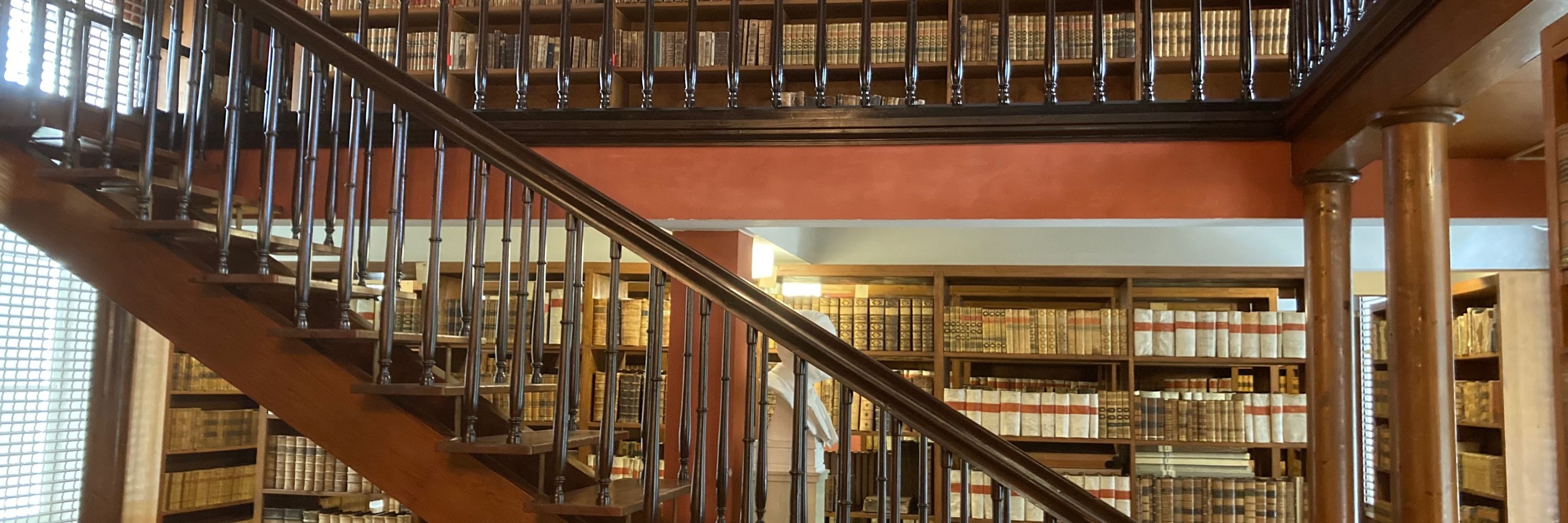
Researcher affiliated with @utu.fi
#langsky
I also took the opportunity to fill in my brand new affiliation with @utu.fi
#langsky
hcommons.org/members/joha...
I also took the opportunity to fill in my brand new affiliation with @utu.fi
#langsky
hcommons.org/members/joha...
I also took the opportunity to fill in my brand new affiliation with @utu.fi
#langsky
hcommons.org/members/joha...
I am curious if there been any back-up on this inscription in letters “d’apparence étrusque” found in Tunisia? Quote from Chabot, Recueil d’inscriptions libyques; 1941, p. 8.
@olawikander.bsky.social @mattitiahu.bsky.social
@lameensouag.bsky.social

I am curious if there been any back-up on this inscription in letters “d’apparence étrusque” found in Tunisia? Quote from Chabot, Recueil d’inscriptions libyques; 1941, p. 8.
@olawikander.bsky.social @mattitiahu.bsky.social
@lameensouag.bsky.social
www.noemamag.com/the-last-day...

You still find my publications on Researchgate and I plan to start updating on Knowledge commons. My last one I uploaded yesterday:
www.researchgate.net/publication/...

You still find my publications on Researchgate and I plan to start updating on Knowledge commons. My last one I uploaded yesterday:
www.researchgate.net/publication/...
For example, 'to molest' is a false friend of Spanish 'molestar' (to annoy) but they are true cognates, both coming from Latin 'molestāre' (to bother).
Four graphics, all about false friends and false cognates:




For example, 'to molest' is a false friend of Spanish 'molestar' (to annoy) but they are true cognates, both coming from Latin 'molestāre' (to bother).
Four graphics, all about false friends and false cognates:
❄️ #FiNo invites submissions in #phonology, incl. #WorkInProgress. Focus on Ls spoken in #Nordic countries encouraged but not mandatory.
⏰ 1-page abstracts due Nov 9, 2025
🔗 fonologiinorden.wordpress.com/2025/09/10/f...

❄️ #FiNo invites submissions in #phonology, incl. #WorkInProgress. Focus on Ls spoken in #Nordic countries encouraged but not mandatory.
⏰ 1-page abstracts due Nov 9, 2025
🔗 fonologiinorden.wordpress.com/2025/09/10/f...
Someone sent me this meme about an "MIT study" ...
The study is available here:
dspace.mit.edu/handle/1721....

Someone sent me this meme about an "MIT study" ...
The study is available here:
dspace.mit.edu/handle/1721....

weeping willow
[ˈwipʰːɪŋ ˈwɪləw]
We ping Willow.
[wi ˈpʰɪŋ ˈwɪləw]
*We* ping Willow.
[ˈwiː ˈpʰɪŋ ˈwɪləw]
ː lengthens the preceding sound
ˈ indicates stress on the following syllable
1/
weeping willow
[ˈwipʰːɪŋ ˈwɪləw]
We ping Willow.
[wi ˈpʰɪŋ ˈwɪləw]
*We* ping Willow.
[ˈwiː ˈpʰɪŋ ˈwɪləw]
ː lengthens the preceding sound
ˈ indicates stress on the following syllable
1/
It's the reconstruction of what people speaking Proto-Germanic, the distant ancestor of English, called an elbow 2000 years ago.
Here's my second set of 4 graphics showing 16 body parts in Proto-Germanic and its major medieval and modern daughter languages.
1/




It's the reconstruction of what people speaking Proto-Germanic, the distant ancestor of English, called an elbow 2000 years ago.
Here's my second set of 4 graphics showing 16 body parts in Proto-Germanic and its major medieval and modern daughter languages.
1/
@olawikander.bsky.social @bnuyaminim.bsky.social
tlv1.fm?s=%D7%96%D7%...

@olawikander.bsky.social @bnuyaminim.bsky.social
tlv1.fm?s=%D7%96%D7%...
@olawikander.bsky.social @bnuyaminim.bsky.social
tlv1.fm?s=%D7%96%D7%...

@olawikander.bsky.social @bnuyaminim.bsky.social
tlv1.fm?s=%D7%96%D7%...




